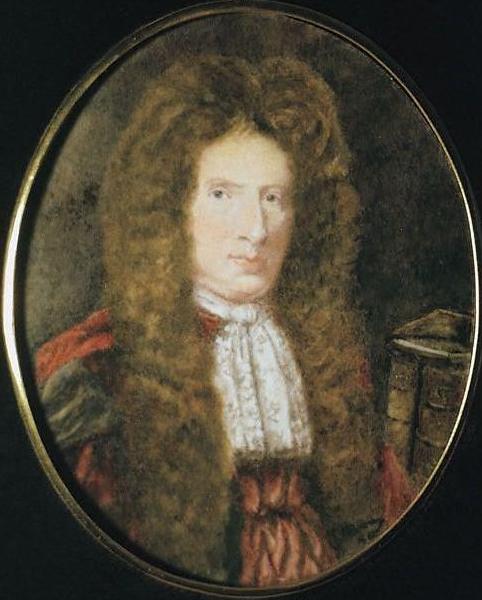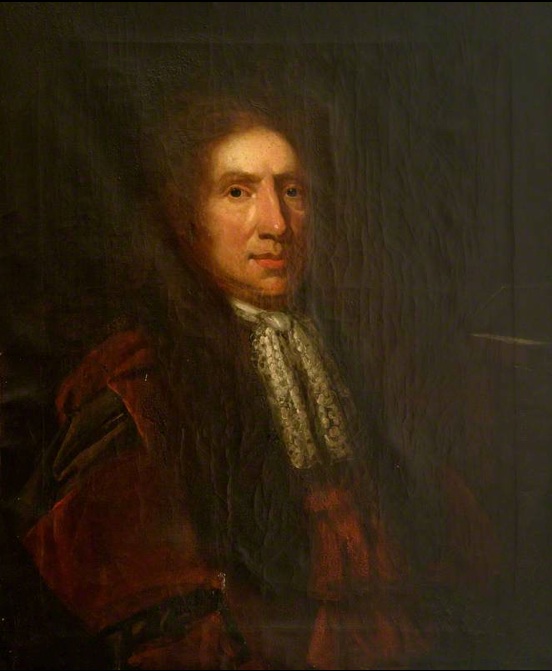|

 Sir Alexander Seton, Lord Pitmedden and 1st Baronet of Pitmedden Sir Alexander Seton, Lord Pitmedden and 1st Baronet of Pitmedden
Lord Pitmedden was Baron
of Pitmedden,
of the House of Meldrum, the 5th Laird of Pitmedden in descent from James Seton of Bourtie and 1st of
Pitmedden who was son of William Seton 5th of Meldrum. Alexander was
the 2nd son of John Seton of Pitmedden, 3rd Laird, who was killed
at the Bridge of Dee in 1639 and who was succeeded by his eldest son,
James Seton, as 4th Laird. When James died in 1667, Sir Alexander Seton
succeeded his brother as the 5th Baron of Pitmedden.
Immediately upon succeeding to the
estate, he began to transform the grounds into a magnificent formal garden,
which still exists to this and day and has been masterfully re-created by the
National Trust for Scotland.
He was bred to the
profession of Law, and having greatly distinguished himself, recieving
the honor of Knighthood by King Charles II in 1664. He was an
advocate, and became a Senator of the College of Justice and a Lord
of Justiciary, taking the title of Lord Pitmeddon, in 1677, and
was Member of Parliament for the County of Aberdeen in 1681-82 and
1685-86. Created a
baronet of Nova Scotia on the 11th of December, 1683, he was
reconfirmed on the 15th of January 1684. After the
Revolution he was offered the dignity of a Lord of Session by King
William, but being a man of the highest sense of honor, he
declined the office and retired into private life
refusing to take the Oath of Loyalty to King William II and III in 1688,
having already professed his Oath to his Stuart Monarch, James VII
and II (though he was badly treated by King James).
This
refusal is not surprising in a member of an outstandingly loyal house whose
entries in the Court of the Lord Lyon show his pride in his father's sacrifice
of his life for the House of Stuart. This we
know from the entries of his arms in the Public Register of All Arms and Bearings in Scotland.
His father, John Seaton of Pitmedden, was killed by a cannon ball
through his heart while fighting under the Royal Standard. Sir
Alexander Seton cultivated music and possessed a vast and curious
library, and was the author of several learned treatises. He
married Margaret Lauder, daughter and heiress of William Lauder,
Esq., one of the Clerks of Session, and had a numerous family, of
whom William succeeded him, George founded the second Seton's of
Mounie, Alexander was physician to the forces under the Duke of
Marlborough, Elizabeth married Sir Alexander Wedderburn of
Blackness, Bart., and Anne married William Dick of Grange, Esq..
Lord Pitmedden's Arms, entered in the new register of the Lord Lyon King of Arms,
were inaugurated in 1672 by
an Act of the Scots Parliament, and are still current. He died in 1719,
whereupon he was succeeded by his son, William Seton.
Sir William Seton was
also a Member of
Parliament, and the most influential such member who treated the Union between
Scotland and England. It was William Seton who argued the case before the
Scots Parliament to such convincing end, that it paved the way for the creation
of the United Kingdom as we know it.
| 
